
How to Use 1 Channel Relay module with Optocoupler: Examples, Pinouts, and Specs
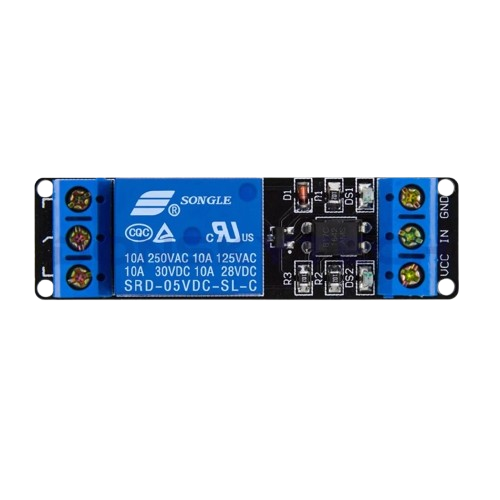
 Design with 1 Channel Relay module with Optocoupler in Cirkit Designer
Design with 1 Channel Relay module with Optocoupler in Cirkit DesignerIntroduction
The 1 Channel Relay Module with Optocoupler (Manufacturer: Songle, Part ID: SRD-05VDC-SL-C) is a versatile electronic component designed to control high-voltage devices using low-voltage signals. This module is equipped with an optocoupler, which provides electrical isolation between the control circuit and the high-voltage load, ensuring safety and protecting sensitive components from potential damage.
Explore Projects Built with 1 Channel Relay module with Optocoupler
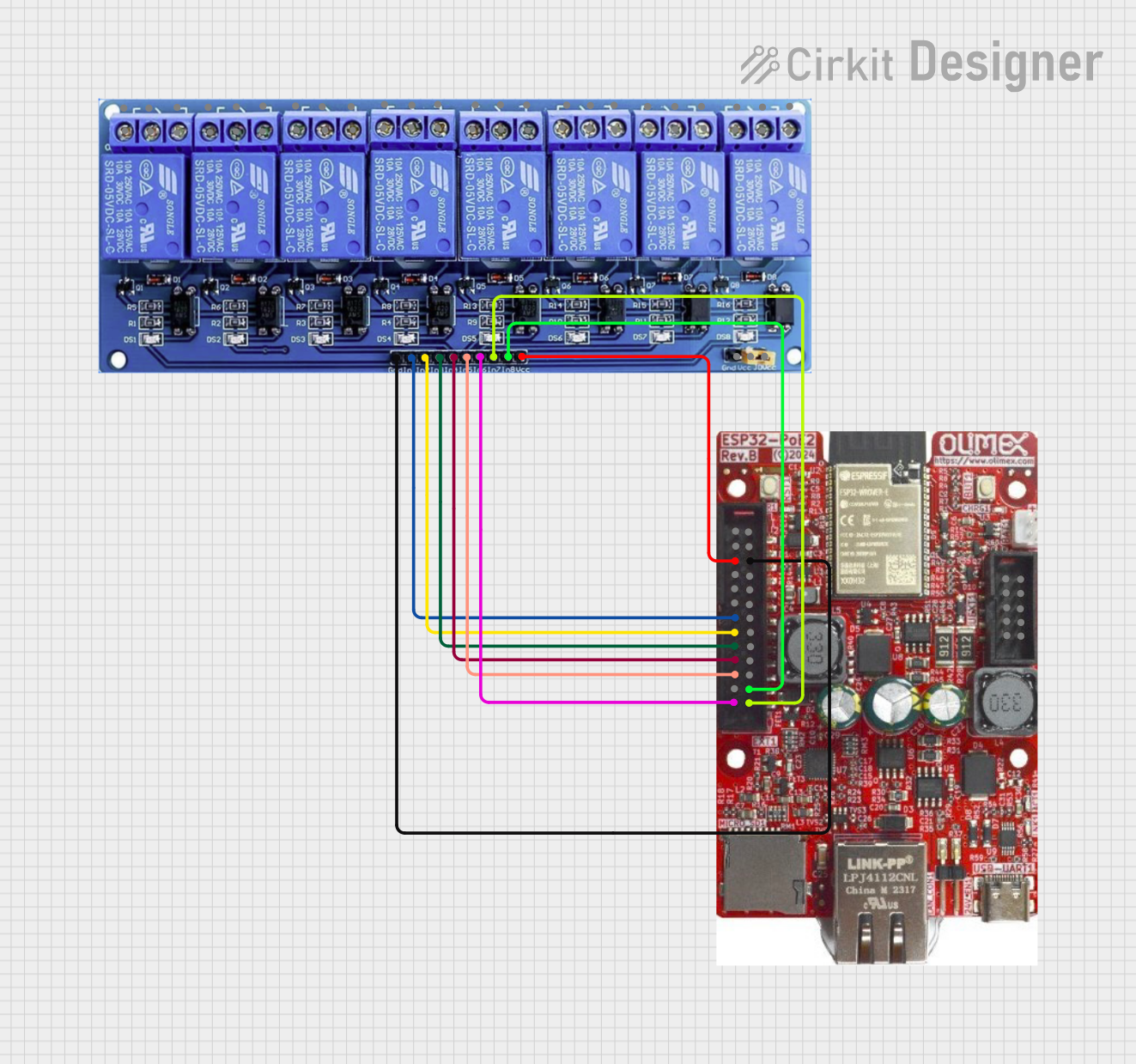
 Open Project in Cirkit Designer
Open Project in Cirkit Designer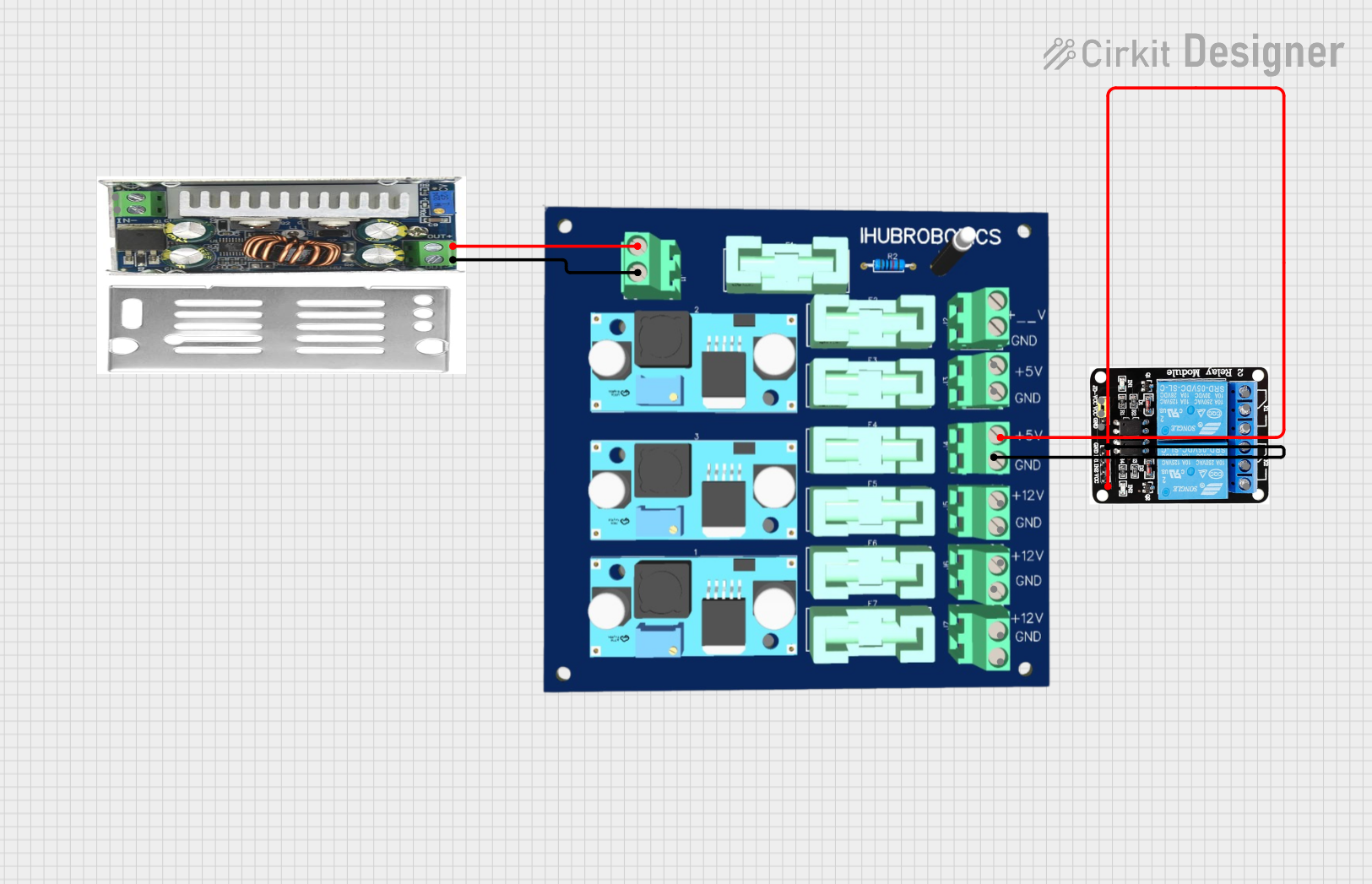
 Open Project in Cirkit Designer
Open Project in Cirkit Designer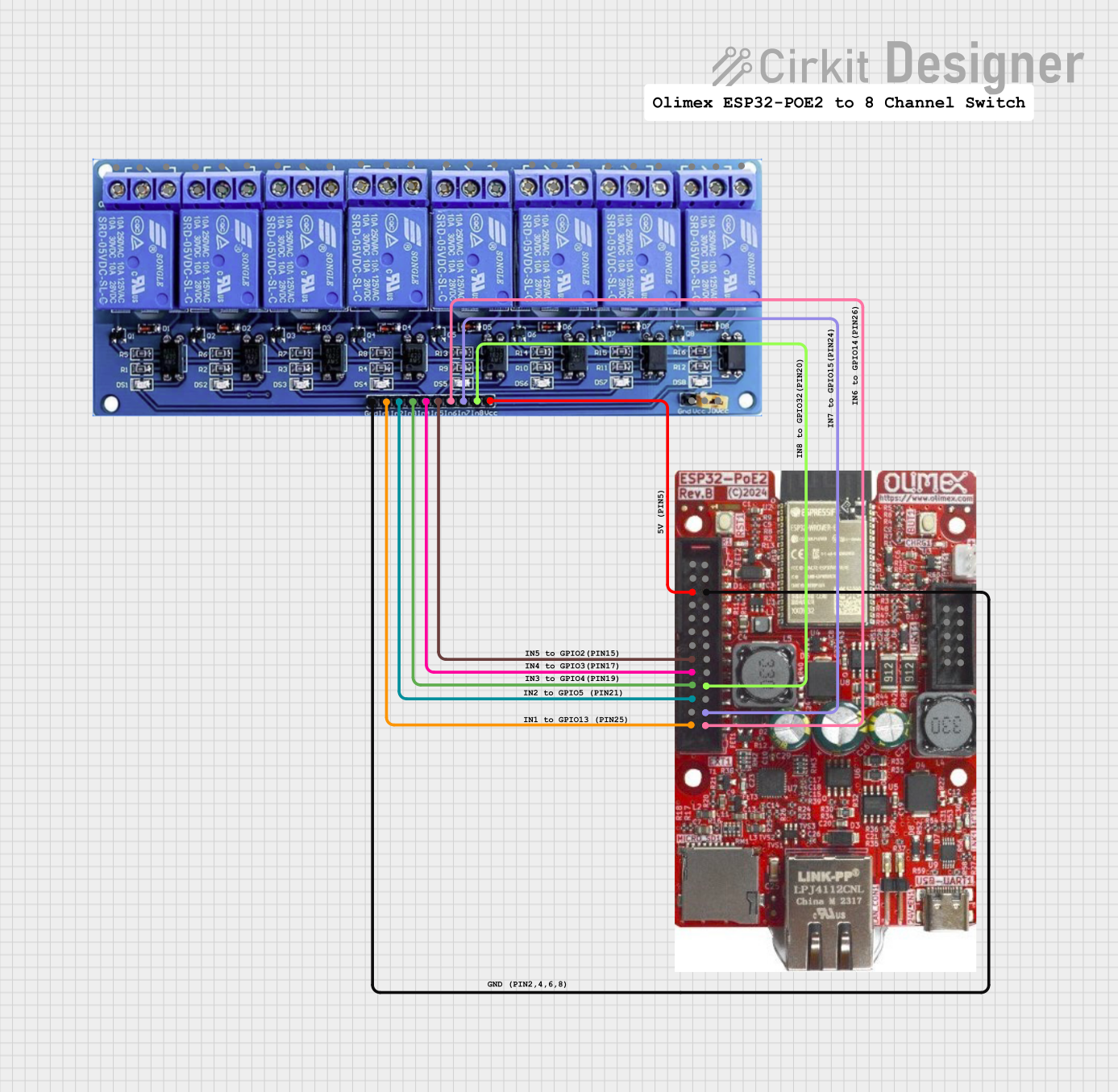
 Open Project in Cirkit Designer
Open Project in Cirkit Designer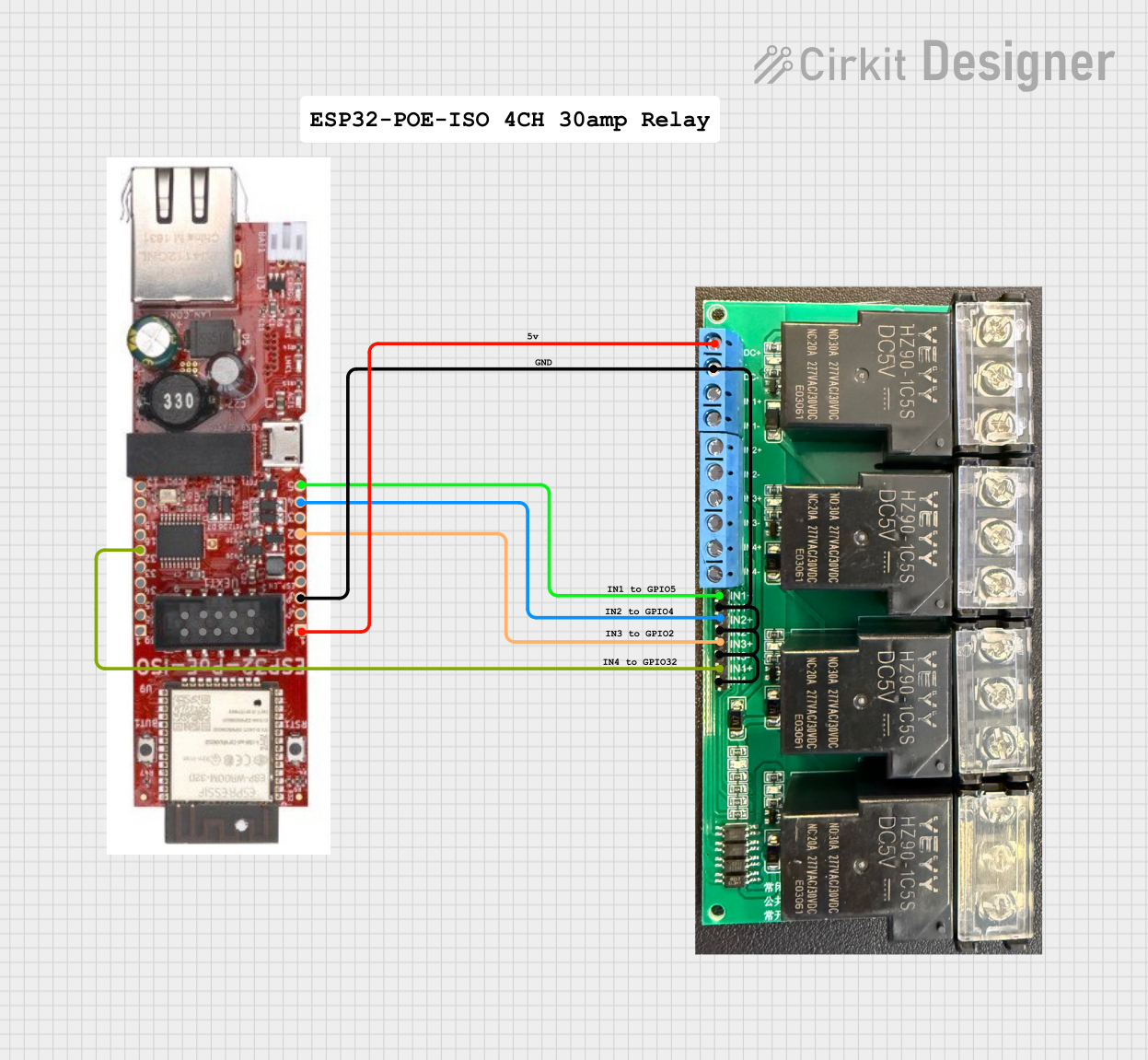
 Open Project in Cirkit Designer
Open Project in Cirkit DesignerExplore Projects Built with 1 Channel Relay module with Optocoupler

 Open Project in Cirkit Designer
Open Project in Cirkit Designer
 Open Project in Cirkit Designer
Open Project in Cirkit Designer
 Open Project in Cirkit Designer
Open Project in Cirkit Designer
 Open Project in Cirkit Designer
Open Project in Cirkit DesignerCommon Applications and Use Cases
- Home automation systems (e.g., controlling lights, fans, or appliances)
- Industrial control systems
- IoT projects for remote device control
- Robotics and mechatronics
- Motor control and switching applications
Technical Specifications
Below are the key technical details and pin configuration for the 1 Channel Relay Module with Optocoupler:
Key Technical Details
| Parameter | Specification |
|---|---|
| Manufacturer | Songle |
| Part ID | SRD-05VDC-SL-C |
| Operating Voltage | 5V DC |
| Trigger Voltage | 3.3V to 5V DC |
| Maximum Load Voltage | 250V AC / 30V DC |
| Maximum Load Current | 10A |
| Isolation Method | Optocoupler |
| Relay Type | SPDT (Single Pole Double Throw) |
| Dimensions | 50mm x 26mm x 18.5mm |
| Weight | ~15g |
Pin Configuration and Descriptions
| Pin Name | Pin Type | Description |
|---|---|---|
| VCC | Power Input | Connect to 5V DC power supply. Powers the relay module. |
| GND | Ground | Connect to the ground of the power supply. |
| IN | Signal Input | Control signal input. A HIGH signal activates the relay. |
| COM | Common Terminal | Common terminal for the relay switch. |
| NO | Normally Open | Normally open terminal. Connect the load here for default OFF state. |
| NC | Normally Closed | Normally closed terminal. Connect the load here for default ON state. |
Usage Instructions
How to Use the Component in a Circuit
- Power the Module: Connect the
VCCpin to a 5V DC power source and theGNDpin to the ground. - Control Signal: Connect the
INpin to a microcontroller (e.g., Arduino UNO) or any other control circuit capable of providing a 3.3V to 5V signal. - Load Connection:
- Connect the high-voltage device (load) to the
COMand either theNOorNCterminal:- Use
NOif the load should be OFF by default and turn ON when the relay is activated. - Use
NCif the load should be ON by default and turn OFF when the relay is activated.
- Use
- Connect the high-voltage device (load) to the
- Activate the Relay: Send a HIGH signal (3.3V to 5V) to the
INpin to activate the relay and switch the load.
Important Considerations and Best Practices
- Electrical Isolation: The optocoupler ensures isolation between the control circuit and the high-voltage load. Always verify the isolation to prevent damage to sensitive components.
- Power Supply: Ensure the power supply can provide sufficient current for the relay coil (typically ~70mA).
- Load Ratings: Do not exceed the maximum load voltage (250V AC / 30V DC) or current (10A) to avoid damage or hazards.
- Flyback Diode: If controlling an inductive load (e.g., motor), use a flyback diode across the load to suppress voltage spikes.
- Safety Precautions: When working with high-voltage loads, ensure proper insulation and avoid direct contact with live wires.
Example: Connecting to an Arduino UNO
Below is an example of how to control the relay module using an Arduino UNO:
Circuit Connections
- Connect
VCCto the Arduino's 5V pin. - Connect
GNDto the Arduino's GND pin. - Connect the
INpin to Arduino digital pin 7. - Connect the load to the
COMandNOterminals.
Arduino Code
// Define the relay control pin
const int relayPin = 7;
void setup() {
// Set the relay pin as an output
pinMode(relayPin, OUTPUT);
// Ensure the relay is OFF at startup
digitalWrite(relayPin, LOW);
}
void loop() {
// Turn the relay ON
digitalWrite(relayPin, HIGH);
delay(5000); // Keep the relay ON for 5 seconds
// Turn the relay OFF
digitalWrite(relayPin, LOW);
delay(5000); // Keep the relay OFF for 5 seconds
}
Troubleshooting and FAQs
Common Issues and Solutions
Relay Not Activating:
- Ensure the
VCCandGNDpins are properly connected to a 5V power source. - Verify that the control signal on the
INpin is within the required range (3.3V to 5V). - Check for loose or incorrect wiring.
- Ensure the
Load Not Switching:
- Confirm that the load is correctly connected to the
COMandNOorNCterminals. - Ensure the load does not exceed the relay's maximum voltage or current ratings.
- Test the relay module with a multimeter to verify proper operation.
- Confirm that the load is correctly connected to the
Interference or Noise:
- Use a flyback diode across inductive loads to suppress voltage spikes.
- Keep high-voltage and low-voltage wiring separate to reduce interference.
Module Overheating:
- Ensure the load current does not exceed 10A.
- Provide adequate ventilation around the module.
FAQs
Q1: Can I use this relay module with a 3.3V microcontroller?
A1: Yes, the module can be triggered with a 3.3V signal, but ensure the VCC pin is powered with 5V.
Q2: Is the relay module suitable for DC loads?
A2: Yes, the module supports DC loads up to 30V and 10A.
Q3: Can I control multiple relay modules with one microcontroller?
A3: Yes, as long as the microcontroller has enough GPIO pins and can supply the required current for each module.
Q4: What happens if I connect the load incorrectly?
A4: Incorrect connections may result in the load not switching or potential damage to the module. Double-check all connections before powering the circuit.